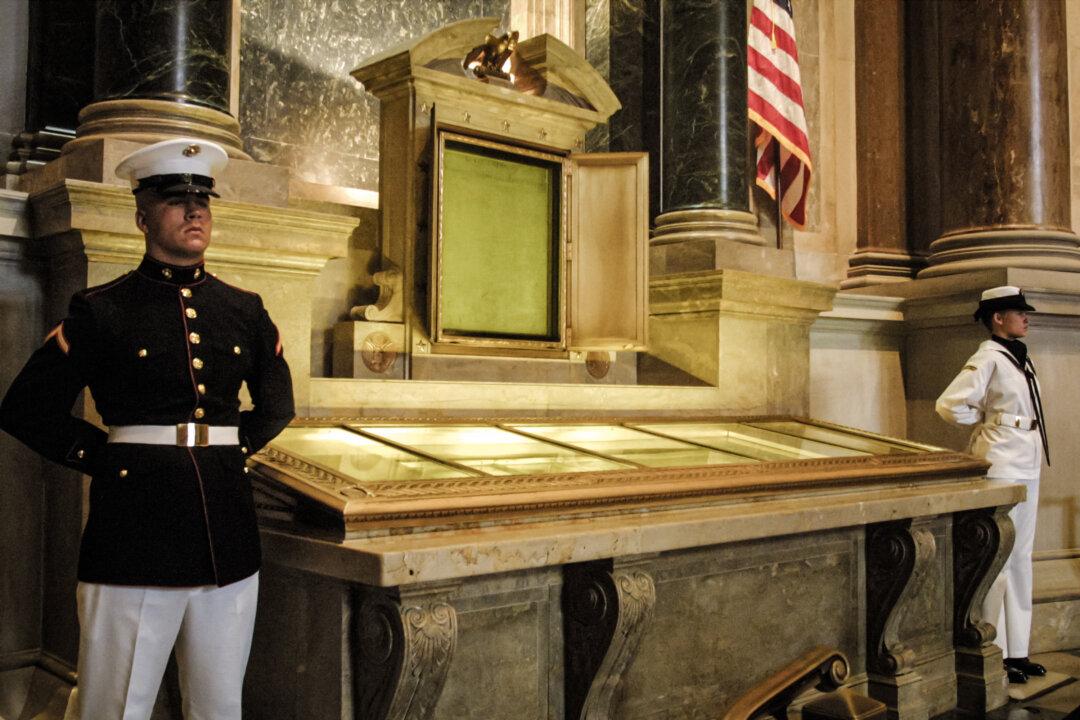The Constitutional Convention released its proposed Constitution to the public on Sept. 17, 1787. Almost immediately, debate began on whether to ratify the document.
The most effective charge against the Constitution was that it would grant too much power to the new federal government. Opponents claimed that if it was adopted, political control would pass from the accessible governments of individual states to a remote central establishment.
That’s why James Madison assured the readers of Federalist No. 45 that:
“The powers delegated by the proposed Constitution to the federal government are few and defined. Those which are to remain in the State governments are numerous and indefinite.”
It was on the basis of representations such as that (together with the promise of a Bill of Rights) that Americans accepted the Constitution.
The Text of the Commerce Clause
The commerce clause reads as follows:“The Congress shall have Power ... To regulate Commerce with foreign Nations, and among the several States, and with the Indian tribes.”
Notice three things about this language. First, the people, through the Constitution, gave this power to Congress, not to the president or to executive branch agencies. Second, the specific power is to “regulate Commerce”—not to regulate the entire economy. As we shall see, when the Constitution was adopted, the phrase “regulate Commerce” had very specific content.
The British Empire and the ‘Law Merchant’
The leading founders all grew up in the British Empire. That empire extended beyond the 13 colonies into Vermont, Canada, the Caribbean, and as far as Australia and India.The empire was an economic powerhouse. One reason was that it encouraged trade. Another reason is that it was fairly decentralized. There was no effort to control everything from London. The British Empire was more of a federation, somewhat like the early Roman Empire.
The government of each political unit in the empire imposed its own taxes. It regulated agriculture, manufacturing, local trade, the courts, religion, education, and other subjects. Within Great Britain, the government was the King-in-Parliament. Within each colony, policy was set by that colony’s local assembly. The assembly consisted of a popularly elected lower house and an appointed or elected upper house.
Thus, the Virginia Assembly regulated the growing and selling of that colony’s tobacco crop. The Massachusetts Assembly governed Massachusetts rivers. Trade with the Indians usually was controlled at the colonial level as well.
However, local control was inadequate for regulating trade across political boundaries. Uniform standards were required for the shipment of goods from London to France or from Charleston, South Carolina, to London. These uniform standards were fixed by the British government—through parliamentary statutes, executive agencies, or the courts.
During the troubles that led to the outbreak of the Revolution in 1775, spokesmen for the American colonists had much to complain about—most famously, “taxation without representation.” But almost all the colonists agreed that the British government should regulate trade (“commerce”) across political boundaries.
Independence—and a Remedy for Commercial Chaos
The American Revolution’s active hostilities continued from 1775 to 1781. In March 1781, the 13 newly independent states entered into a formal treaty of alliance called the Articles of Confederation.The Articles provided for a loose coordinating agency called Congress. But aside from the authority to enter into commercial treaties with foreign countries, the Articles granted Congress almost no power over the law merchant. So in the absence of uniform control, trade wars erupted among the states.
What Does ‘Regulate Commerce’ Mean?
During the public debates over the Constitution, the commerce clause was relatively uncontroversial. People realized that it was both a necessary—and a limited—grant of power.Despite this record, advocates of federal omnipotence (mostly university professors, of course) frequently make greatly exaggerated claims about the scope of the commerce clause. Some say that “commerce” encompasses all economic activities. Others say it encompasses all human interactions of any kind.
Of course, these claims are absurd. They depend on exaggerating tiny threads of evidence and ignoring whole spools of it.
- Bankruptcy law (over which the Constitution also gives a separate power)
- Regulation and licensing of merchants, brokers, and others involved in interstate and foreign trade
- Regulation of commercial paper—notes, drafts, and the like
- Price controls
- All aspects of ships and navigation and certain aspects of other forms of transportation
- Prohibitions on some forms of trade and trading activities
- Regulations of inventory, and flat prohibitions on inter-jurisdictional trading of certain goods (contraband)
- Related financial charges, including but not limited to tariffs, customs, and duties
- Administration of commercial treaties
- Marine insurance (not, as the Supreme Court once ruled, all kinds of insurance)
- Incorporation of trading entities
- Certain criminal measures, such as penalties for piracy and unauthorized mercantile activities
Yet the list goes beyond what some call “making commerce regular”—that is, ironing out trade restrictions.
For example, the commerce clause is not broad enough to allow Congress to prohibit the manufacture of, say, left-handed skyhooks. But it is broad enough to allow Congress to ban the shipment of left-handed skyhooks in interstate or foreign commerce. Whether they are banned within a state is for the people and government of that state to determine.







